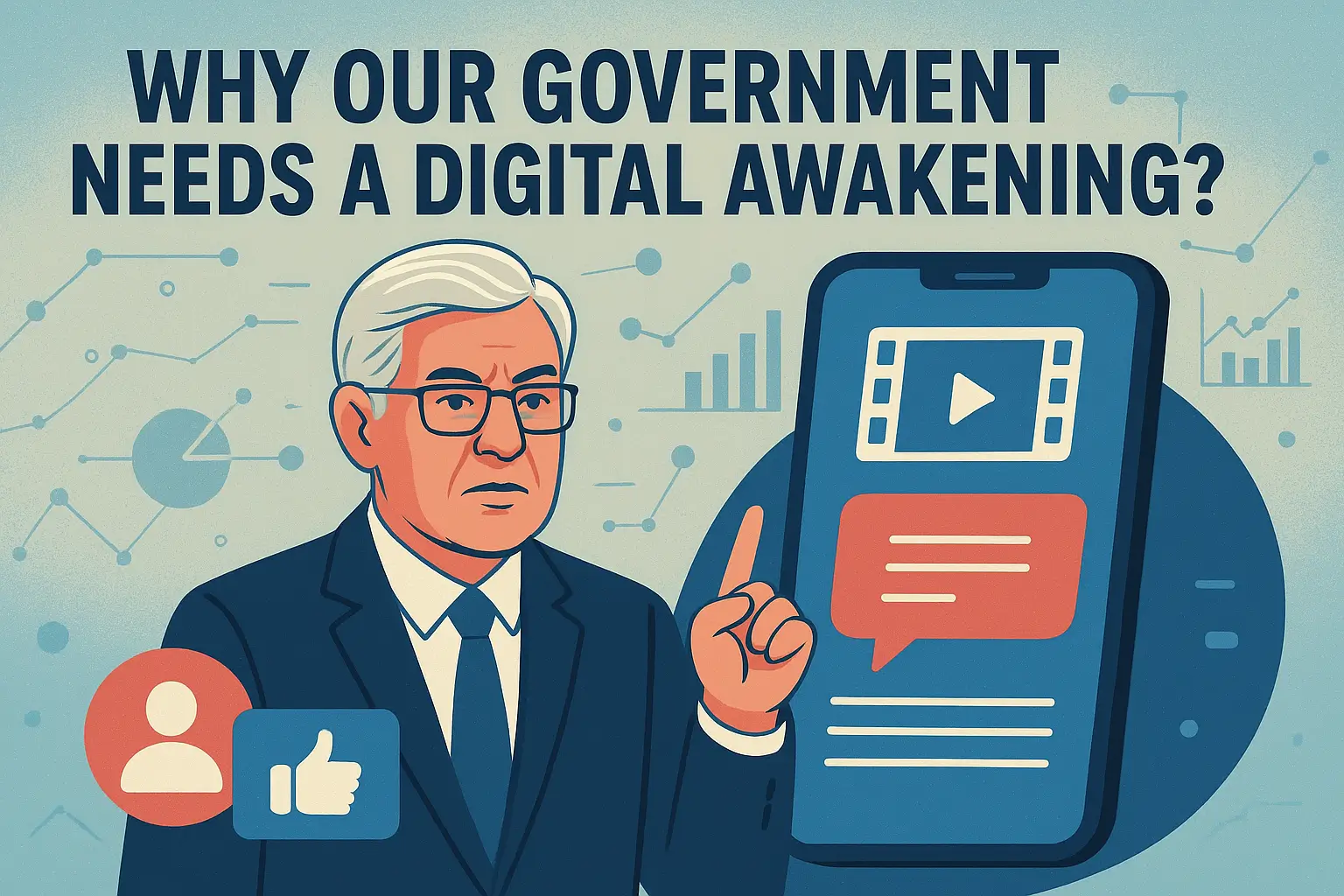
Governments in today’s world are not only judged by their policies or performance in office but also by how effectively they communicate with their people. The digital age has transformed politics into a 24/7 conversation where narratives are shaped in real time. Leaders across the world understand this reality: they invest heavily in digital communication, ensure their cabinets are active online, and treat the digital domain as a frontline of governance. Unfortunately, in Pakistan, this dimension of statecraft remains overlooked.
At present, the government does not have a centralised narrative hub from where information can be streamlined, monitored, and strategically disseminated. Instead, messaging is scattered, reactive, and often contradictory. Without such a coordinated digital centre, the government appears fragmented and unable to speak in one clear voice. This weakness creates a vacuum where misinformation thrives and public trust erodes.
Defence Minister Khawaja Asif has demonstrated how digital presence can be used effectively. Whether during the Iran-Israel conflict, heightened tensions with India, or on routine national issues, his timely and straightforward communication has shown how a leader can shape narratives and connect directly with citizens.
The absence of a strong digital presence among most cabinet members has only deepened the problem. In a country where half the population is under 35 and consumes news primarily through digital platforms, the silence of senior ministers on these platforms is glaring. Many cabinet members are either not present online at all, or if they are, they lack the knowledge of which trends to follow, how to engage with citizens, and what issues to amplify. The result is a government that feels distant from the pulse of its people.
There is, however, one notable exception. Defence Minister Khawaja Asif has demonstrated how digital presence can be used effectively. Whether during the Iran-Israel conflict, heightened tensions with India, or on routine national issues, his timely and straightforward communication has shown how a leader can shape narratives and connect directly with citizens. But one man’s effort, however commendable, cannot carry the weight of an entire government.
The contrast becomes even starker when we look at how one political party in Pakistan weaponised the digital space. Their success lay not only in posting content or producing slick videos but in deploying psychological warfare tools that tapped directly into the emotions of citizens. Behind their campaigns were not just social media managers but teams of strategists and psychological experts who provided day-to-day instructions on how to strike at the public’s sentiments, fears, and frustrations. Even today, with their leader in jail for more than two years, they continue to manipulate public opinion by using AI tools to recreate his speeches in his own voice, spreading them online as if he were addressing the nation in real time. This calculated exploitation of technology demonstrates how digital media can be used not for constructive governance but as a weapon to mislead, destabilise, and maintain influence. The government, meanwhile, has largely remained a passive observer, failing to build the digital sophistication needed to counter such tactics.
Contrast this with how other governments operate. In the United States, every member of the President’s cabinet maintains a visible digital presence, while the White House runs a highly coordinated communication structure that sets the narrative daily. In the United Kingdom, successive prime ministers have treated digital communication as central to governance, ensuring that ministers engage directly with citizens and maintain credibility online. In the Gulf, Saudi Arabia and the UAE have built state-of-the-art digital command centres that track narratives in real time, deploying technology and AI tools to ensure their governments remain visible, responsive, and trusted.
Pakistan cannot afford to ignore this reality any longer. The government must establish a dedicated Digital Narrative Centre under the Prime Minister’s Office to monitor online discourse, identify emerging trends, and shape coherent responses. Cabinet members must be encouraged, even trained, to maintain active and purposeful online presences that reflect their portfolios. Just as daily security or economic briefings are considered essential, there must also be daily digital briefings to align messaging and respond swiftly to misinformation or crises.
In the age of information warfare, perception often outweighs policy. Nations that fail to master the digital space risk becoming irrelevant in the eyes of their own citizens. Pakistan’s leaders must recognise that credibility and connection with the people will increasingly be won or lost on social media timelines and digital feeds. For a young nation with immense potential, the time for a digital awakening is now.
The writer is a digital media & PR Expert and can be reached at eyabahmad@gmail.comPublished on: August 25, 2025

